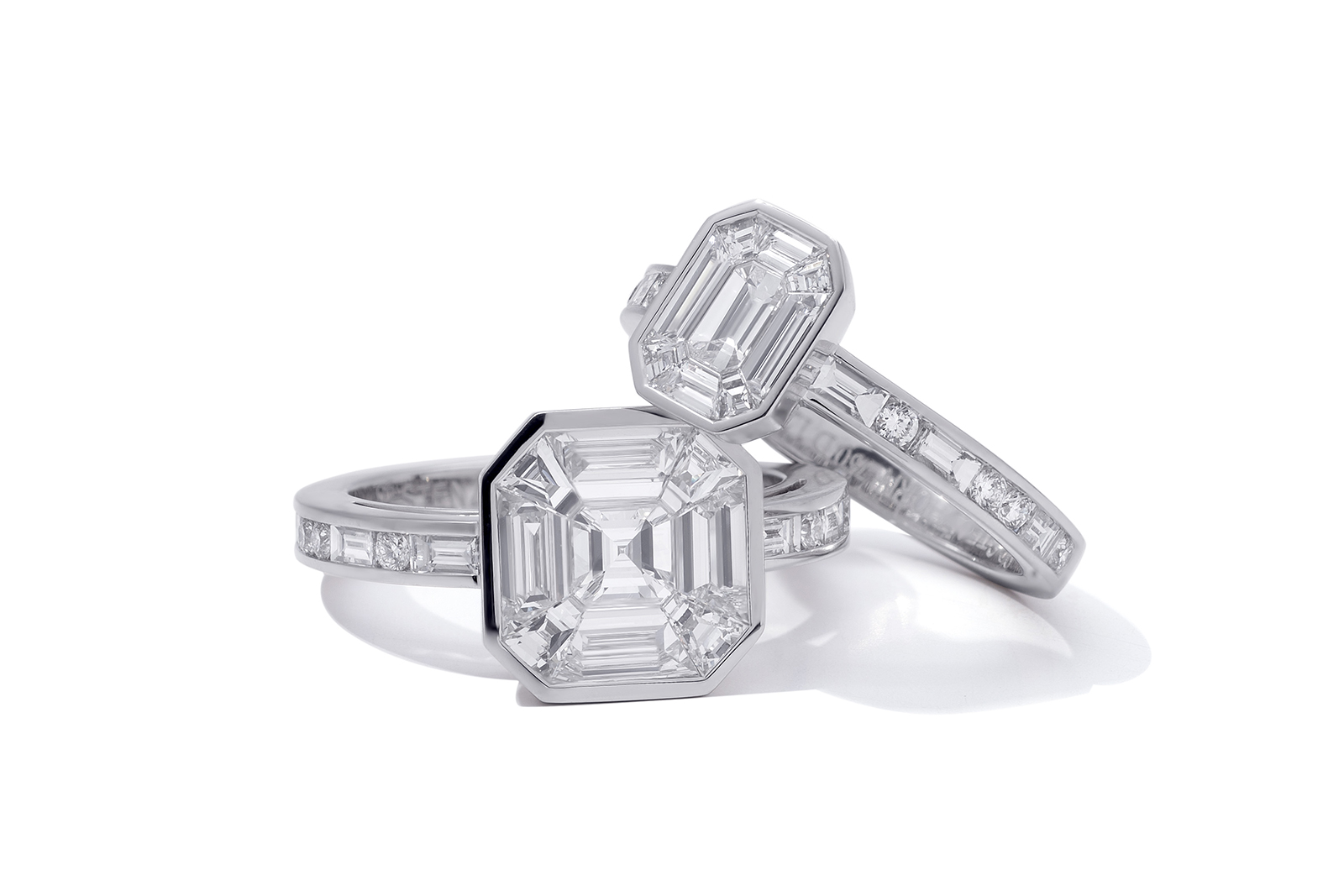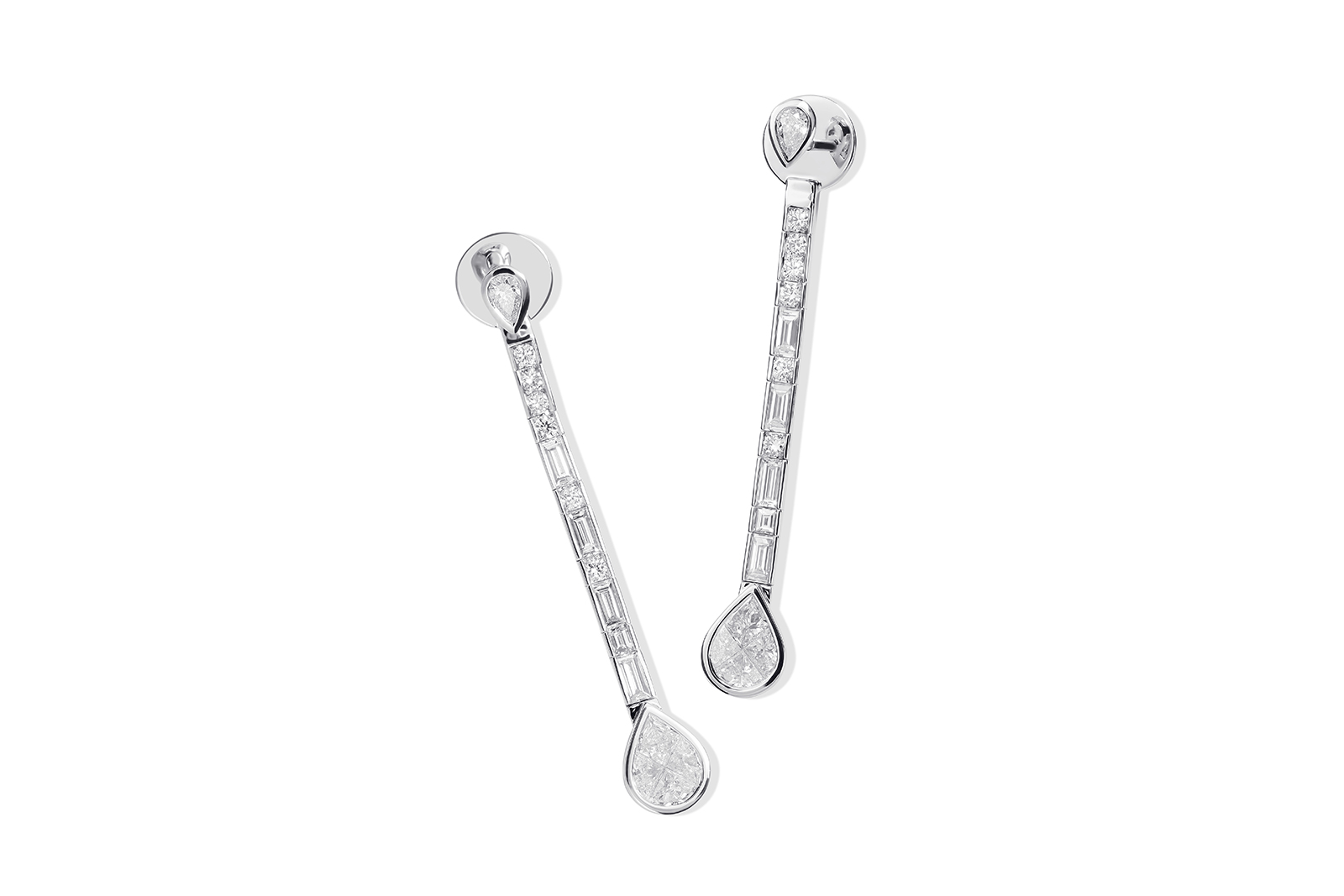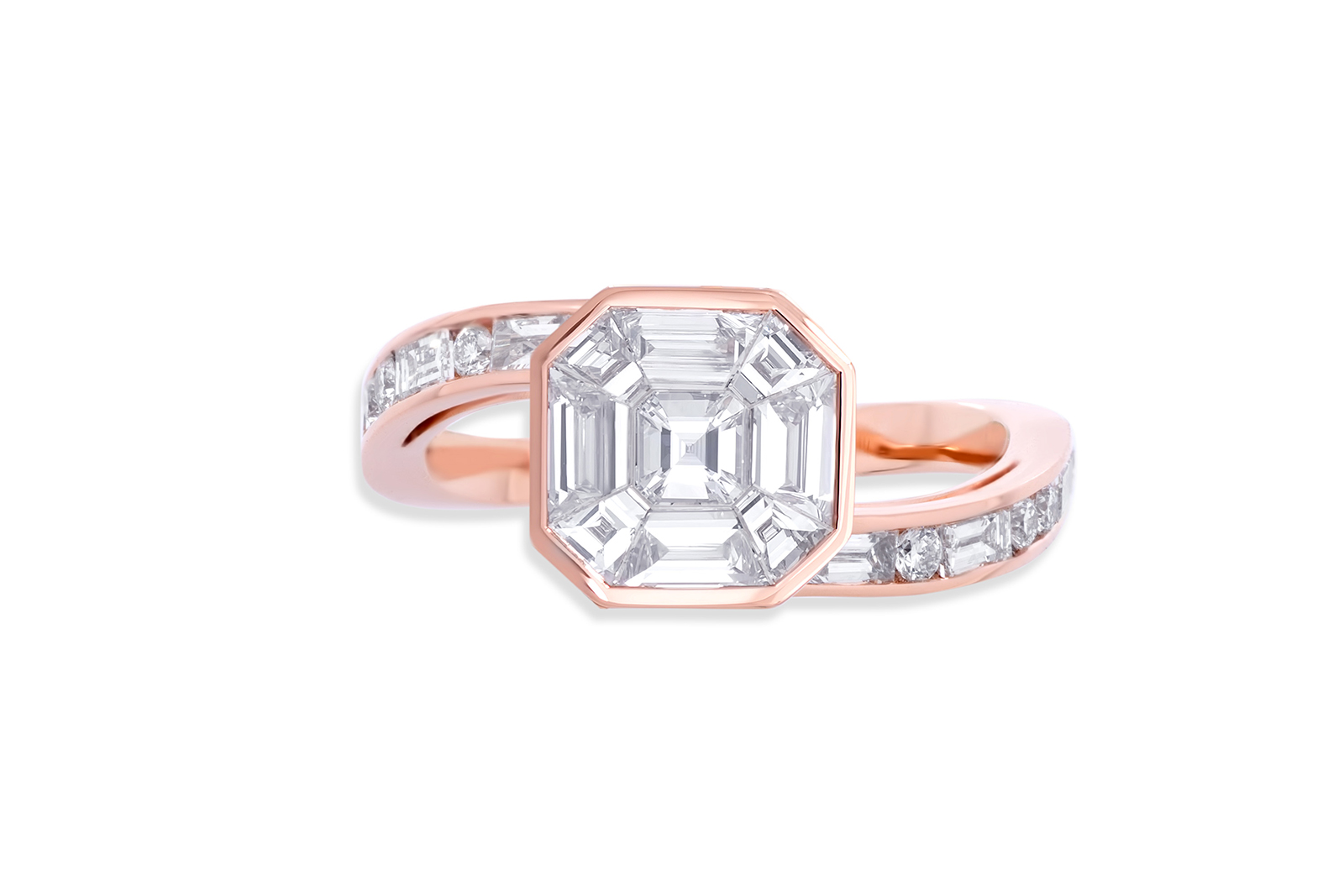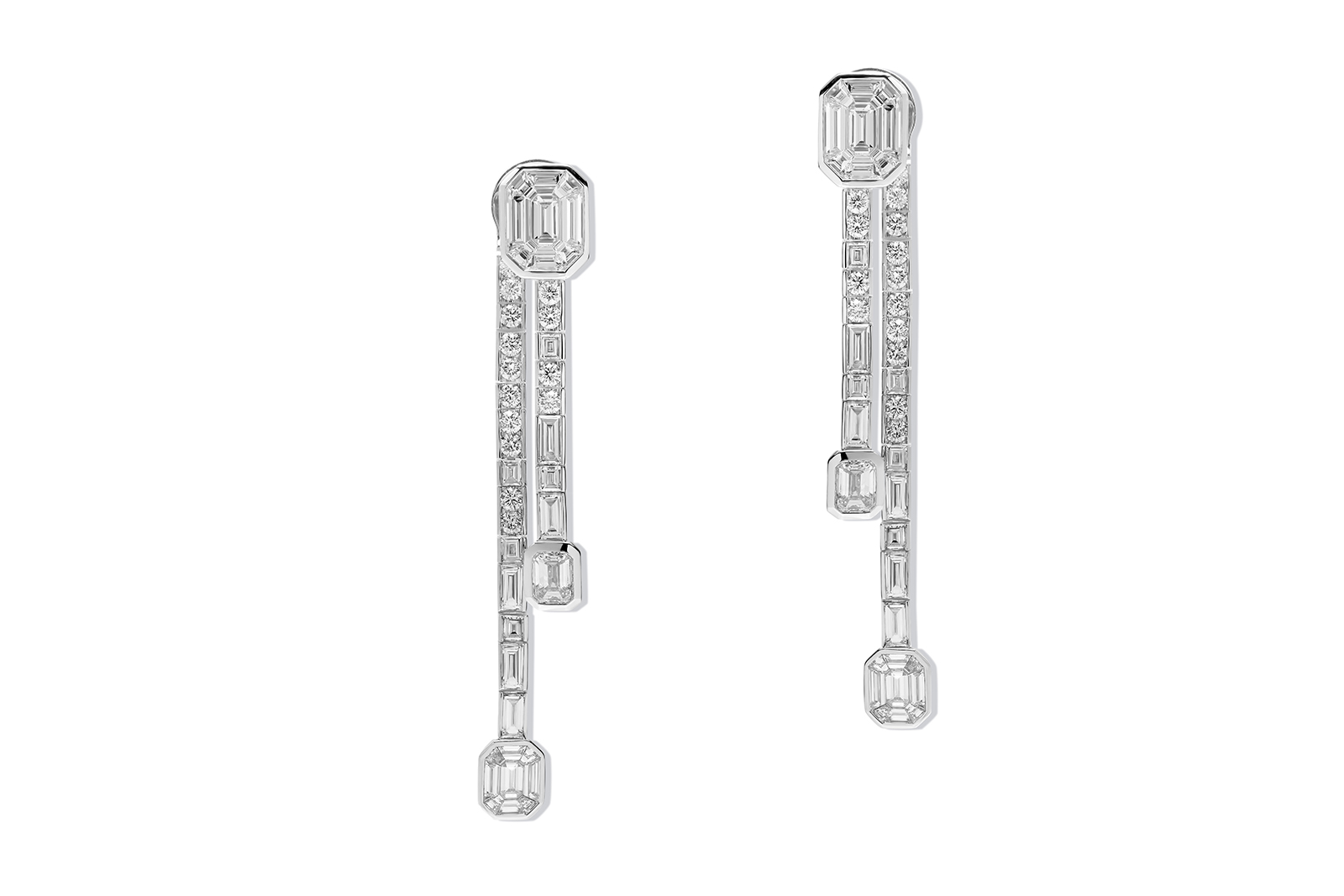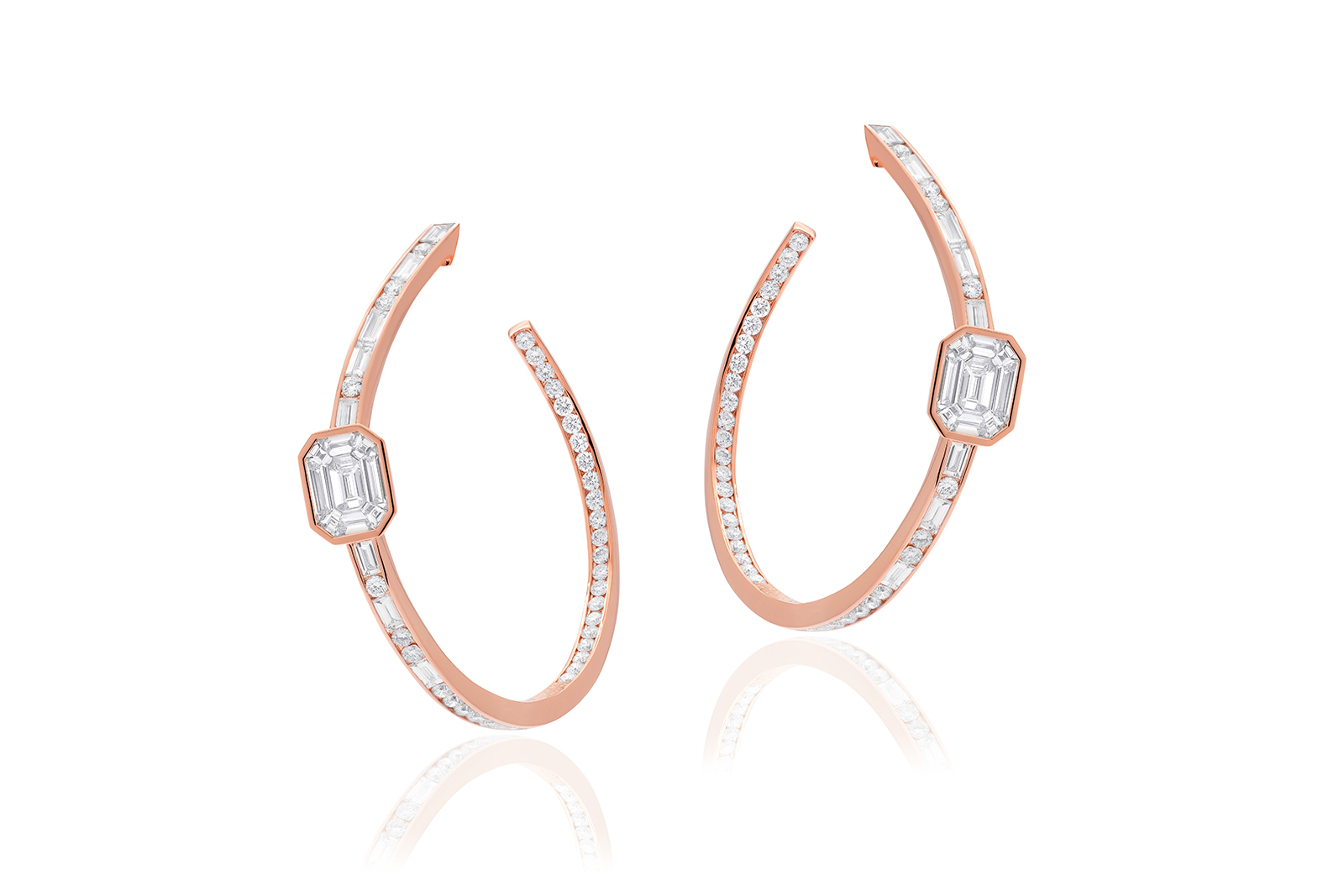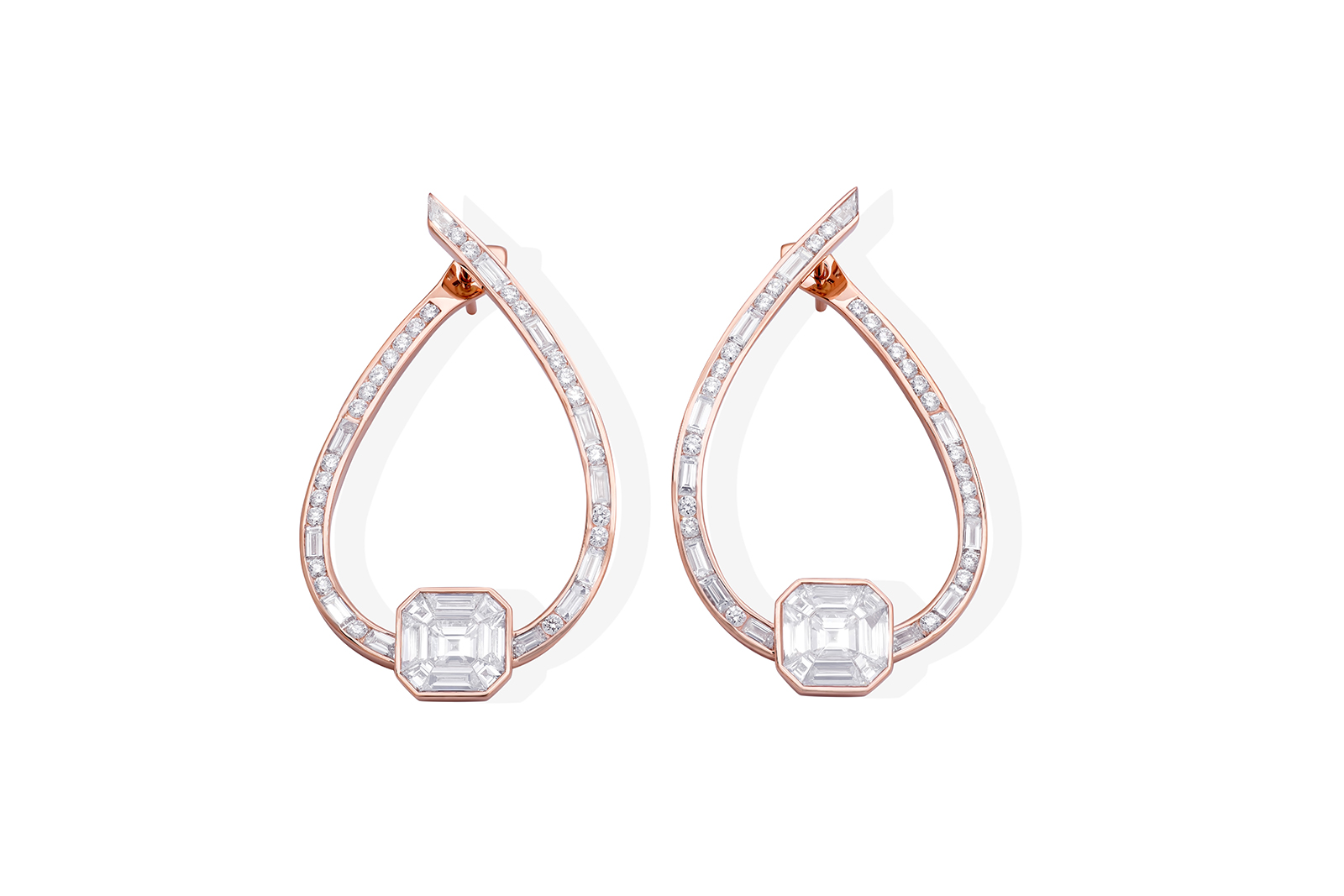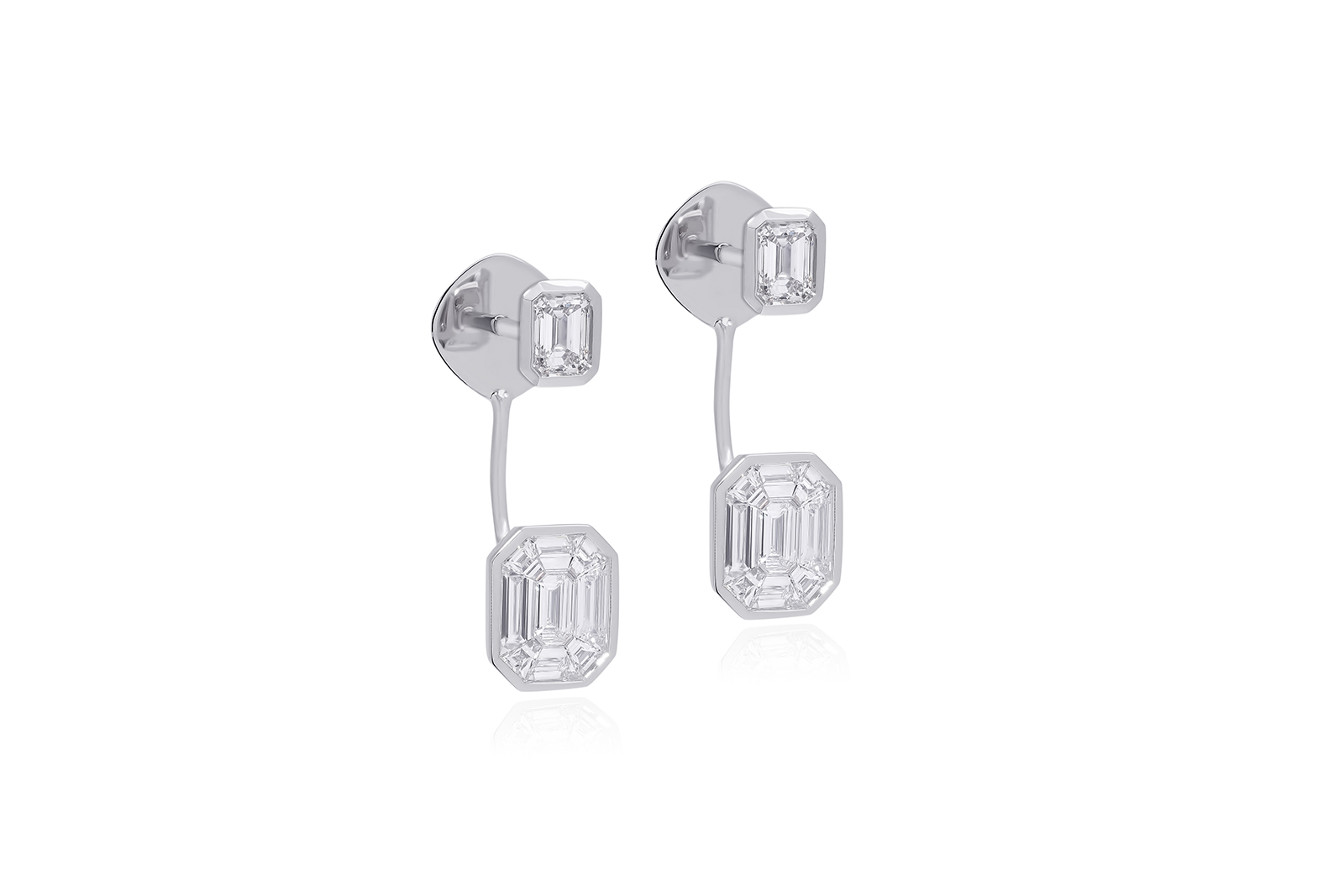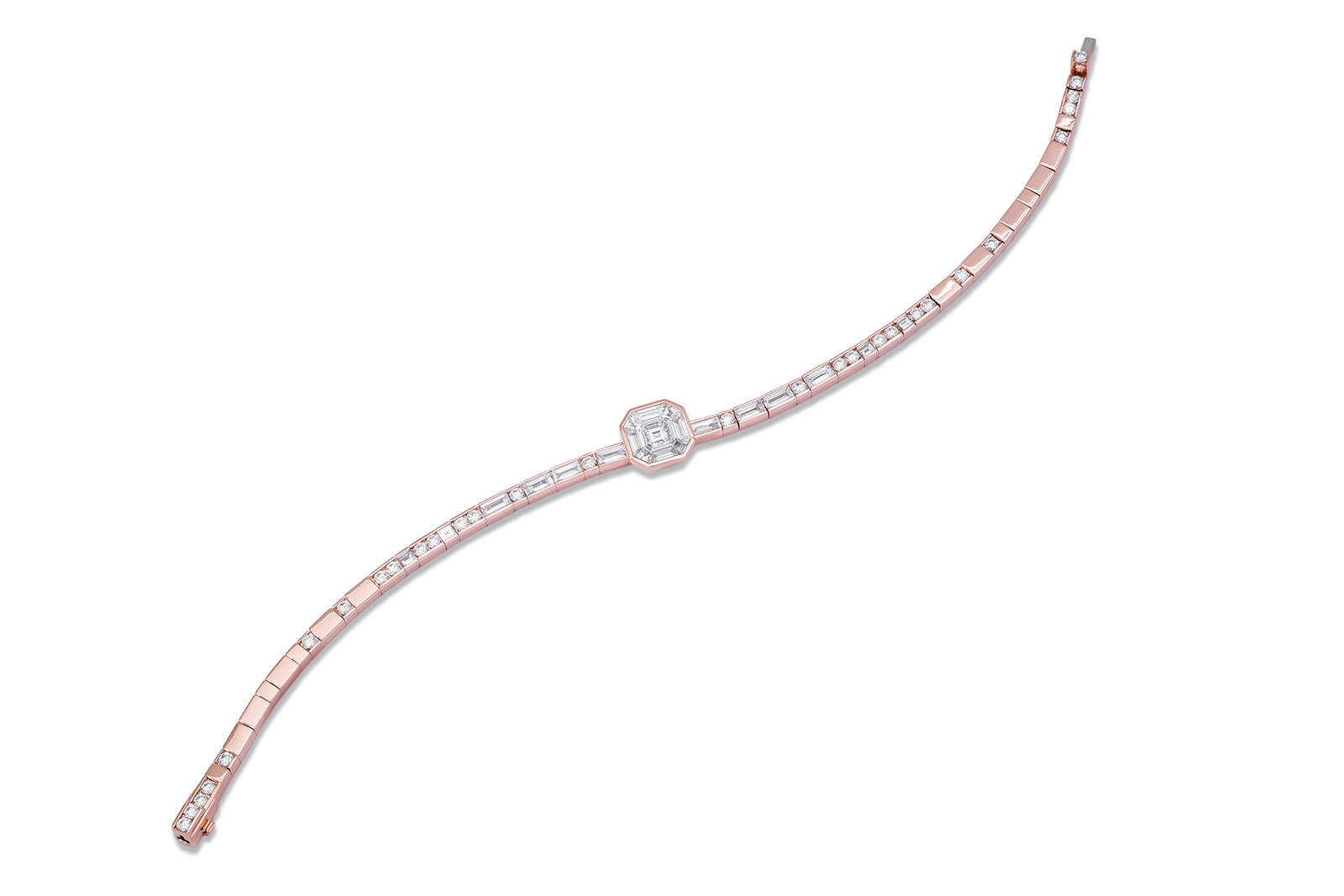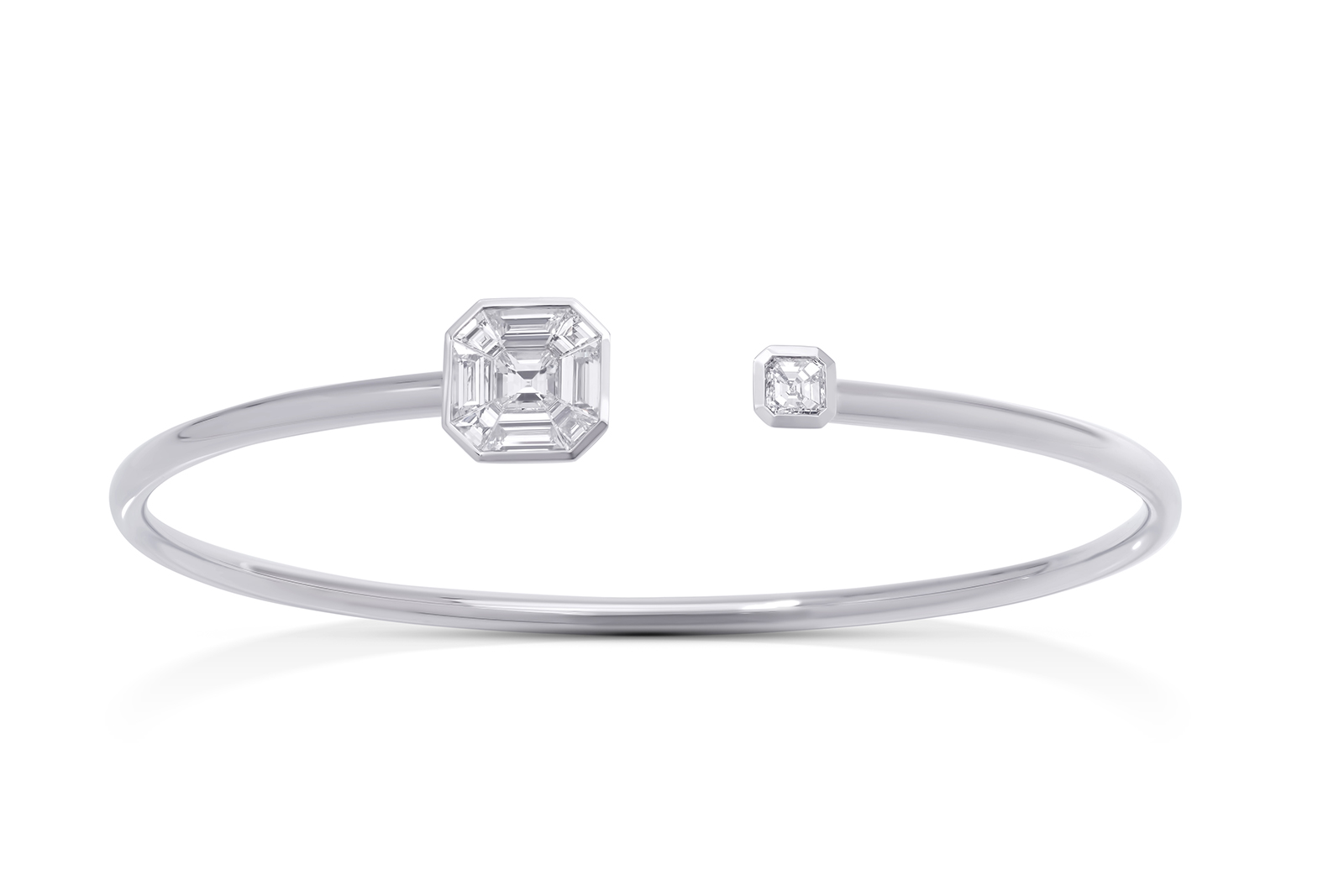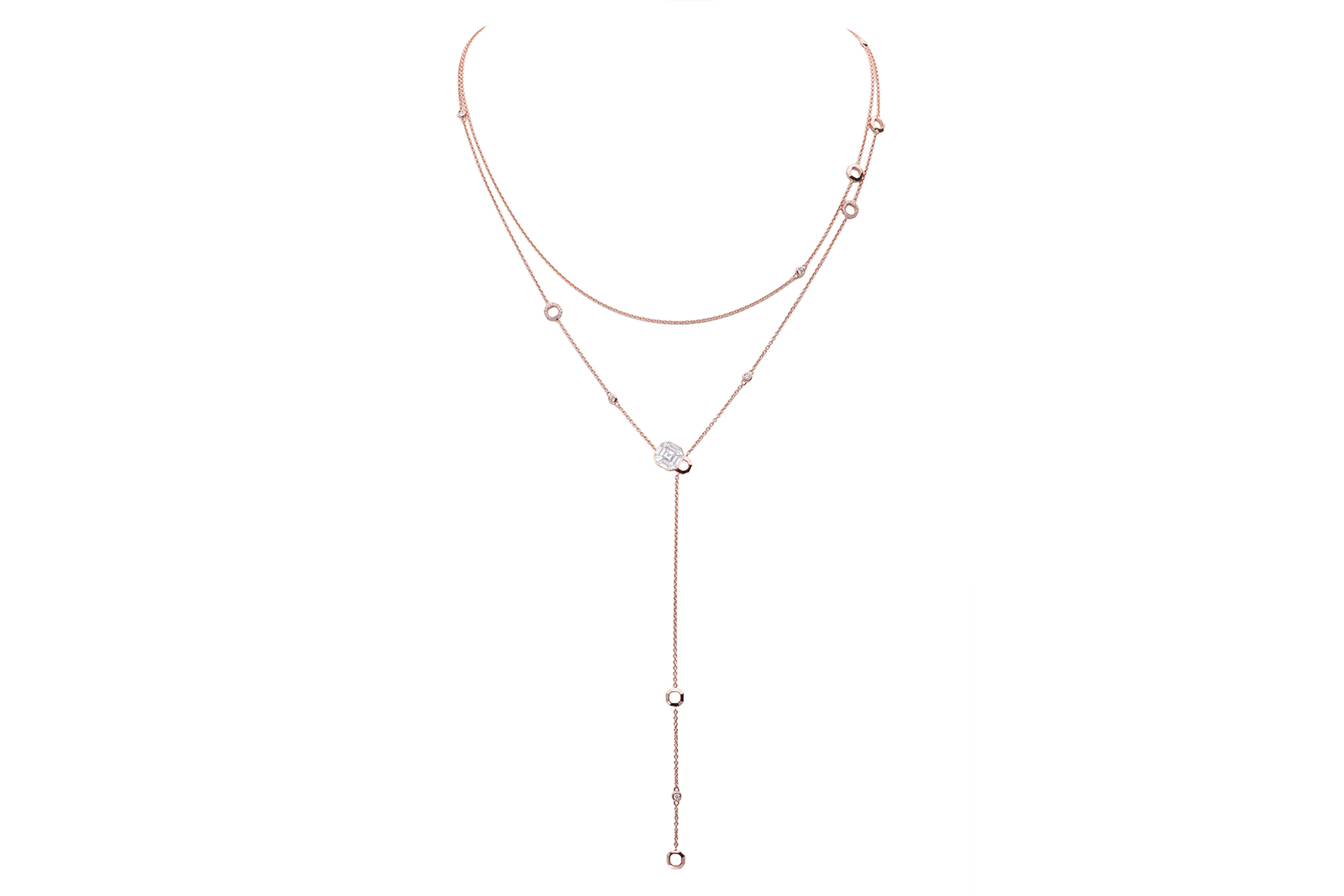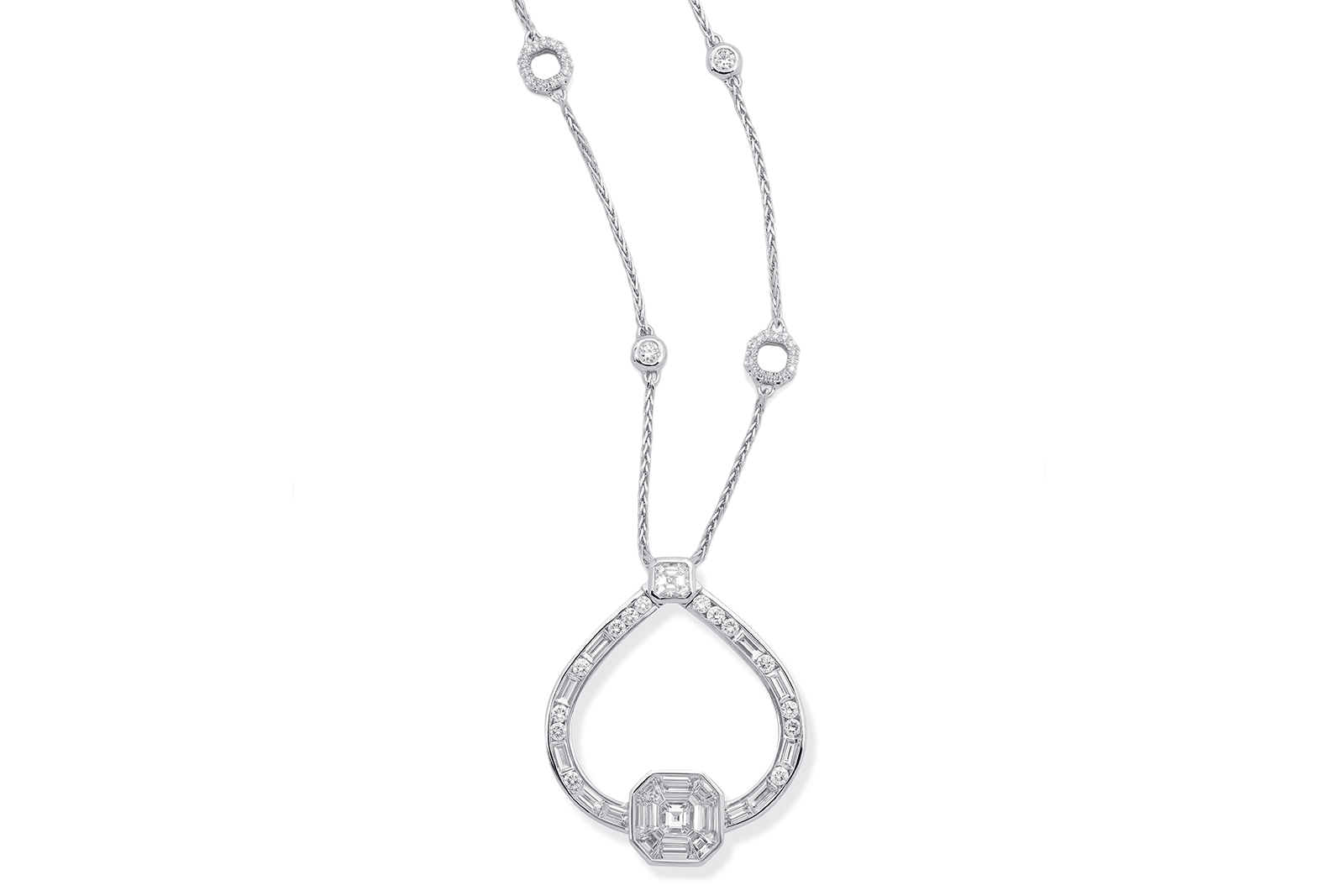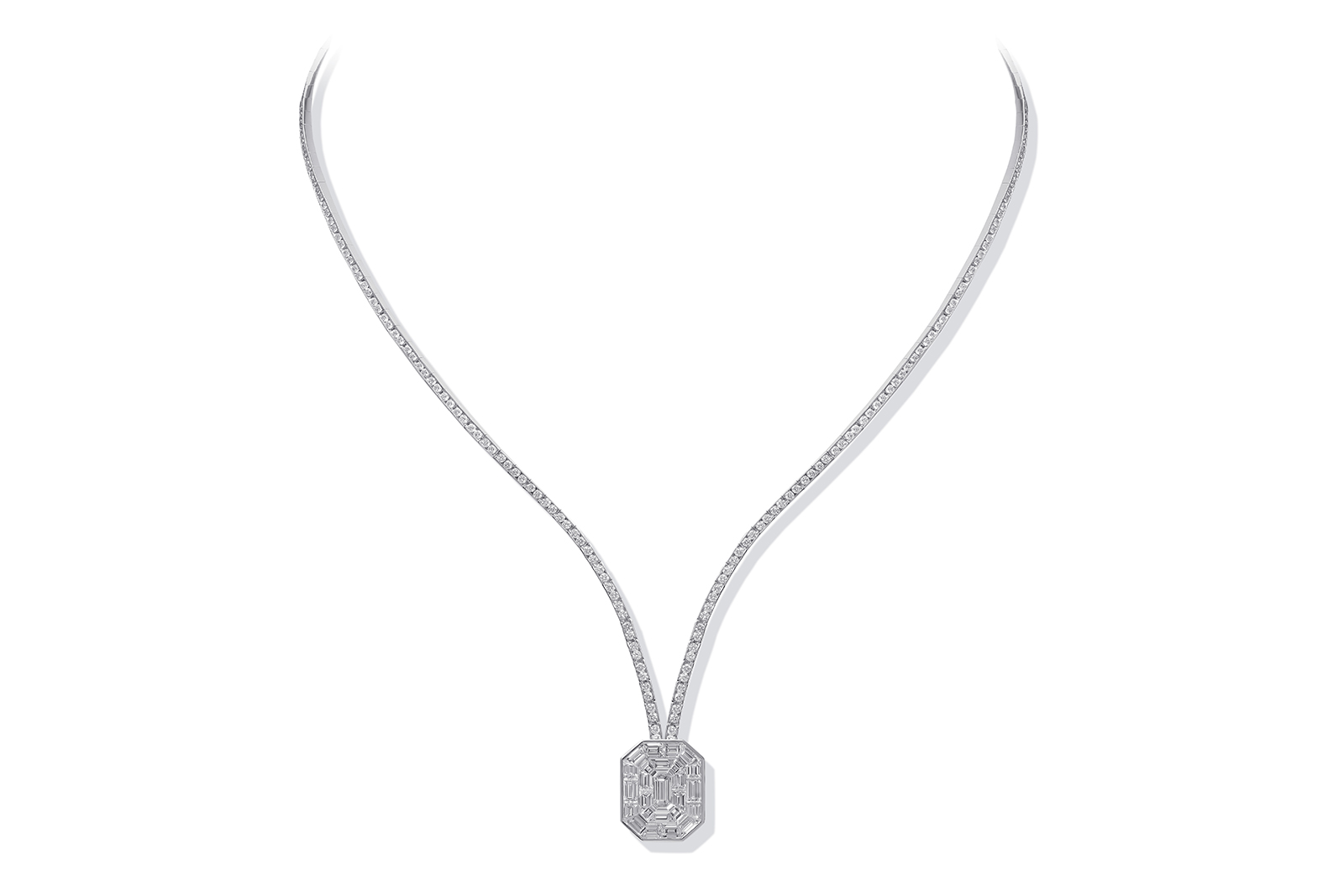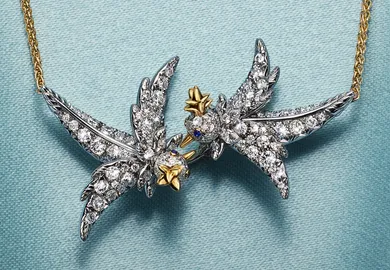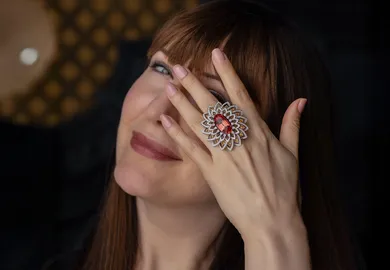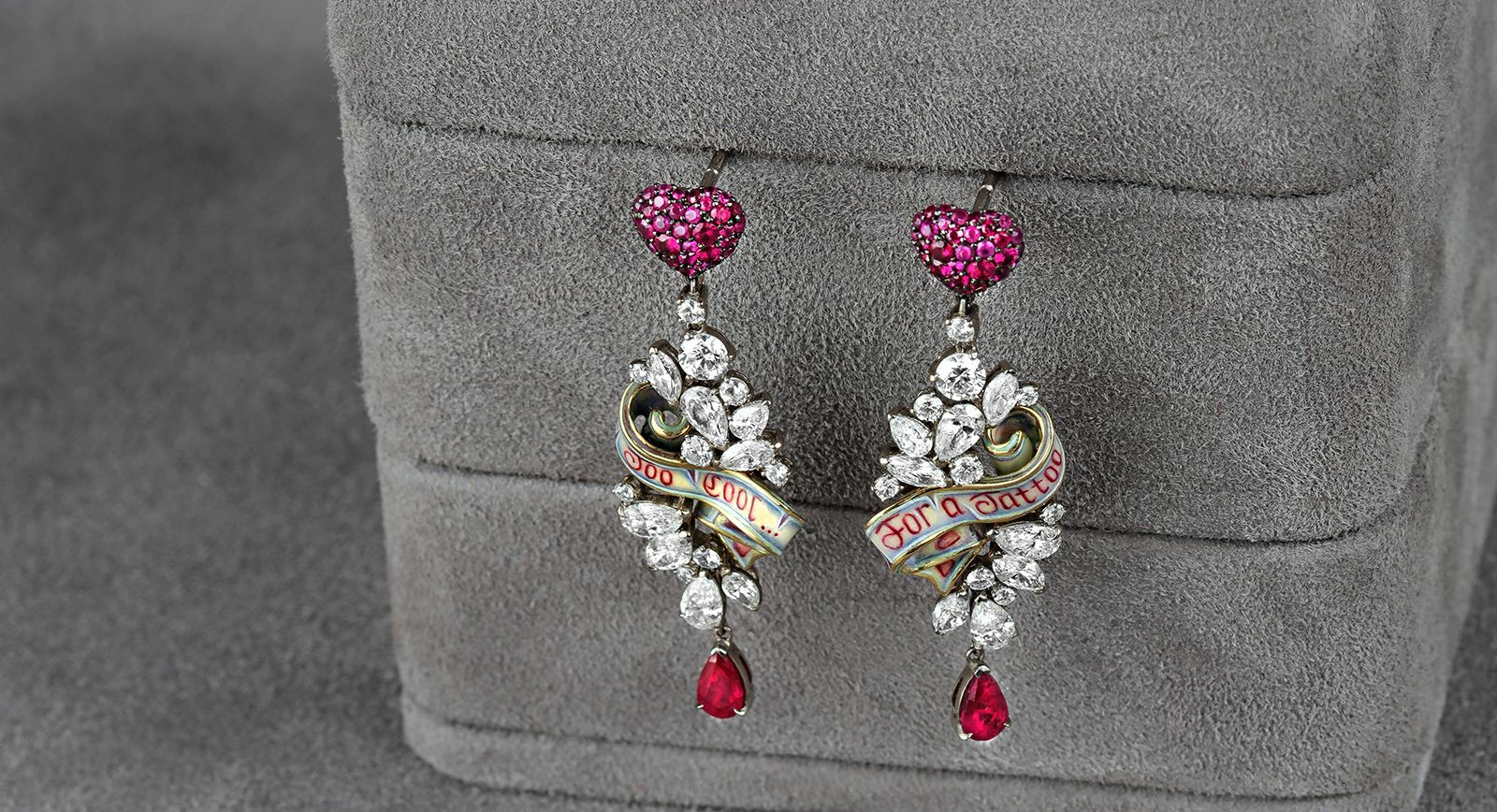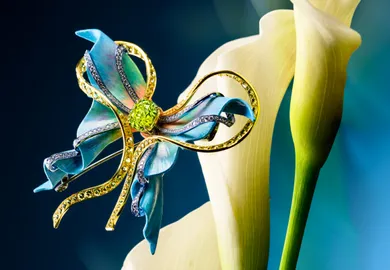
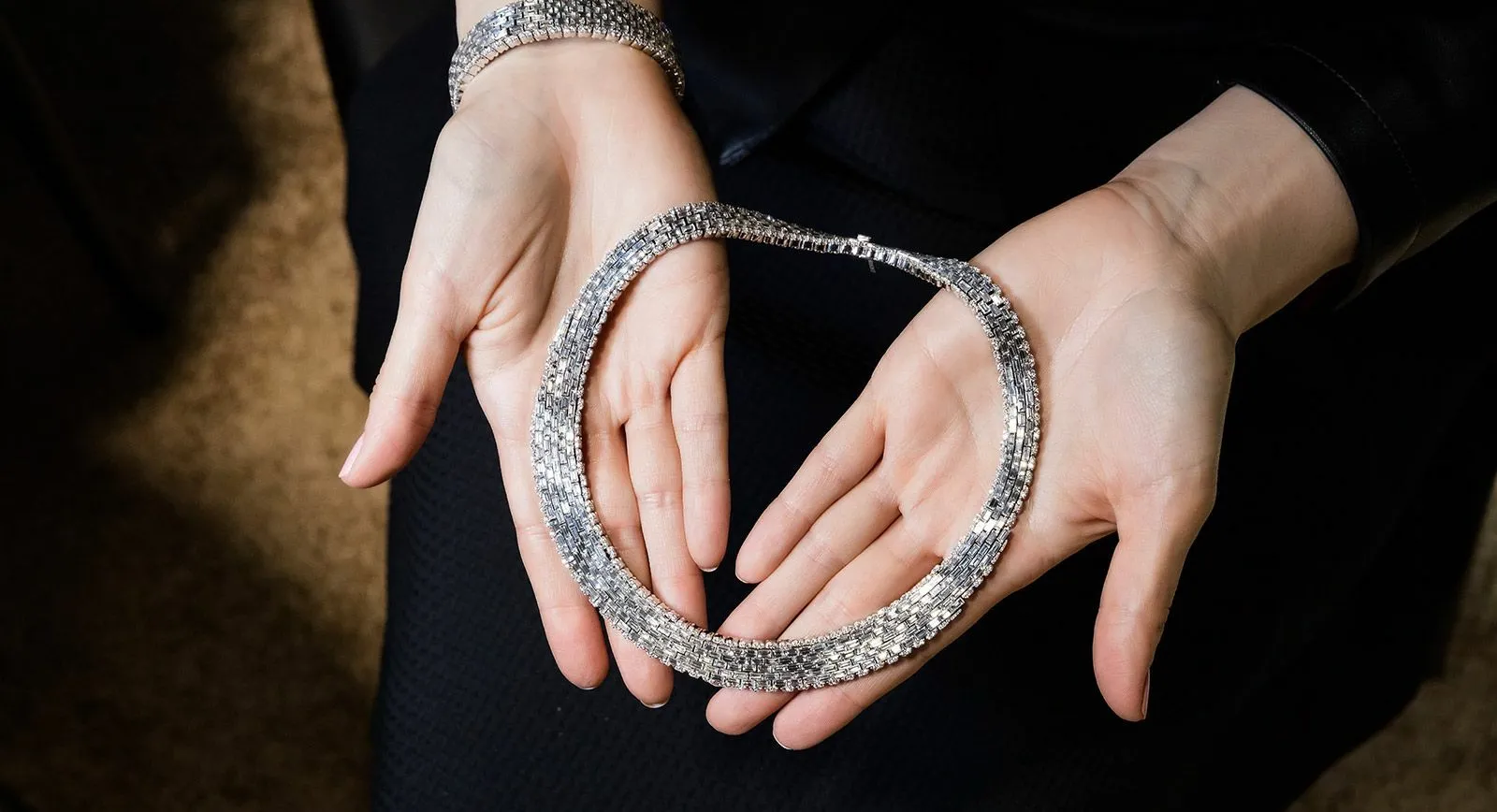
Stenzhorn: Iced Zeit Collection Pays Tribute to the Ice Age and the Beauty of Diamonds
Can designers set new trends in using diamonds and gold? The world has seen so many combinations of these materials that it’s seemingly impossible to come up with a different approach to using these materials. However, same as in music, where despite working with only 7 notes, genius composers incessantly invent new melodies – time and time again. The genius of jewellery art, Klaus Stenzhorn, drew upon just two “notes” – gold and diamonds – to create his unique collection of jewellery, Iced Zeit.
The concept behind the high jewellery creations and everyday pieces from the line is rather unique. It unites Klaus’ most beloved gemstone cuts with favoured jewellery-making techniques. The “baguette”, “diamond” and “carré” cut colourless diamonds flow smoothly one into another, as if obeying the instructions of an imaginary conductor in the form of invisible setting which creates the illusion of a jewelled veil, as well as the “second skin” technique which allows the jewellery to envelop parts of the body perfectly.
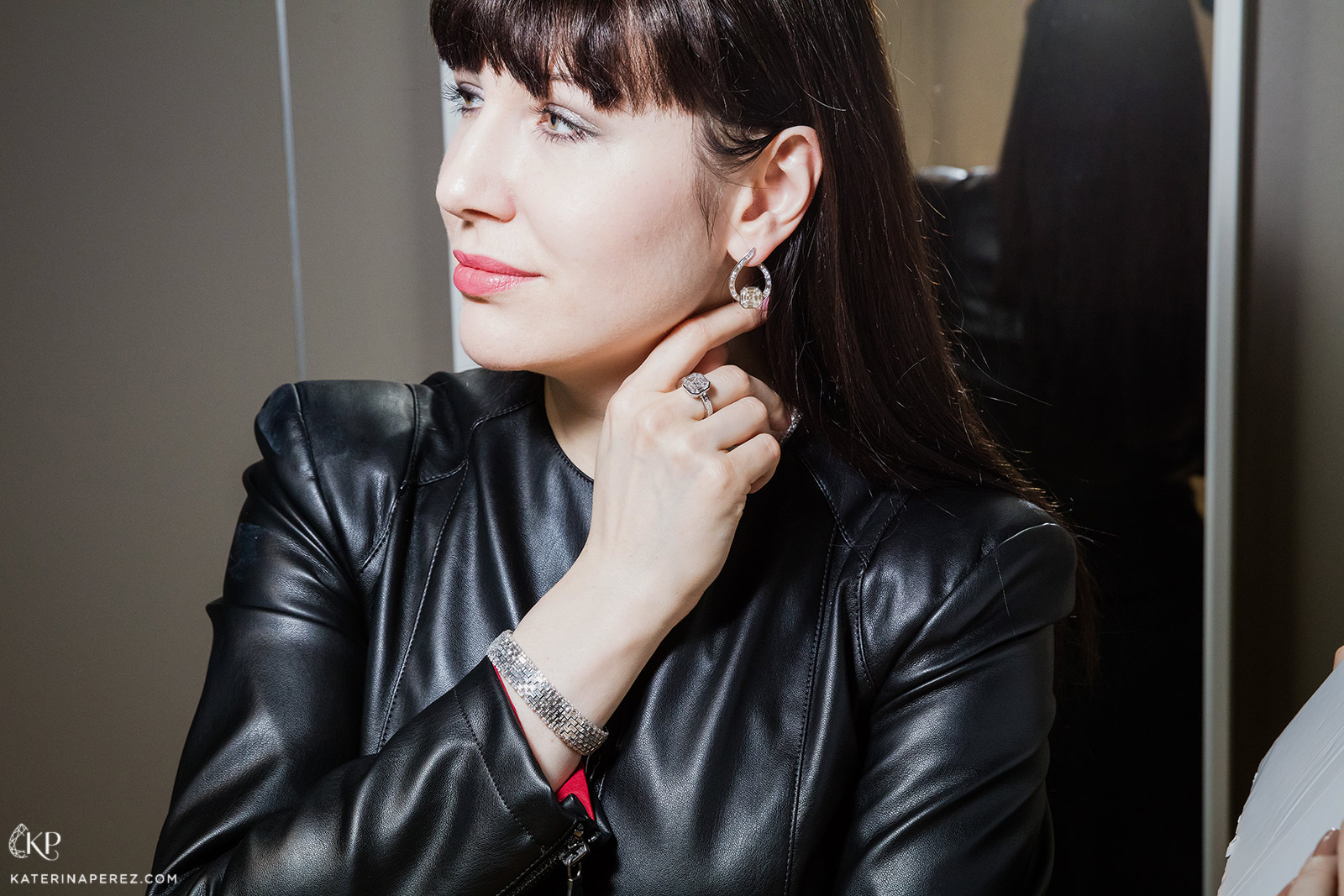
Iced Zeit earrings bracelet and ring with diamonds from Stenzhorn
The unconquerable power of nature, as confirmed during the Ice Age, was the primary source of inspiration for Klaus and the chief designer of the brand, Anna Strarosti. Each piece in the new collection represents the icy elements of the natural world which have kept their forms over millions of years. As such, the necklaces, rings and bracelets are the progeny of ice crystals, glaciers and other features of the Arctic, and are named in their honour.
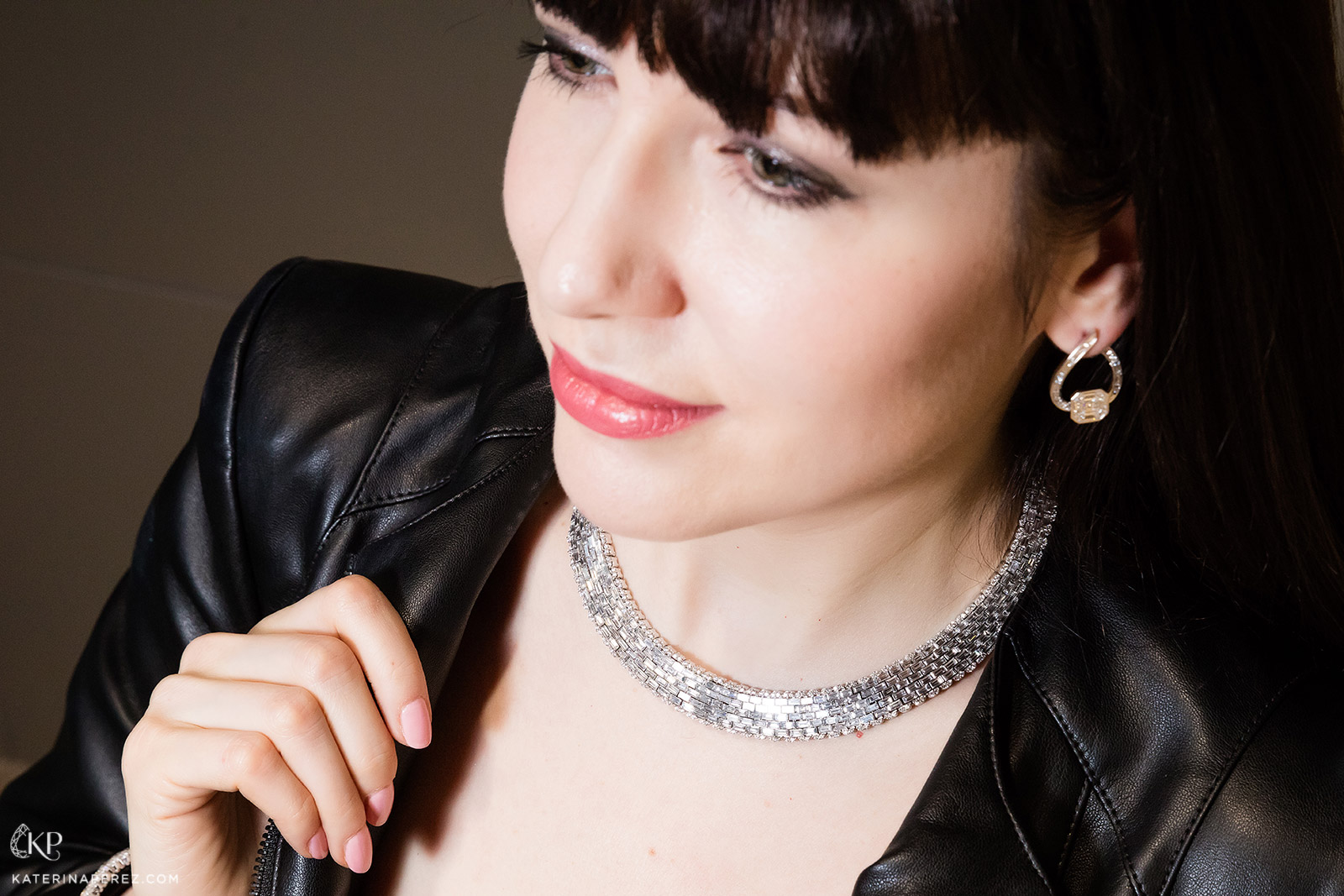
Antartide diamond necklace from Iced Zeit collection by Stenzhorn
One of the most impressive pieces in the collection is the “Antartide” necklace, which takes the form of a wide strip around the base of the neck. It dons over a hundred “baguette” cut diamonds, and sparkles with each movement, much resembling ice. Each element of the piece is carefully attached to the edge of its neighbouring rib, completely obscuring the golden frame from view. How was this incredible piece created?
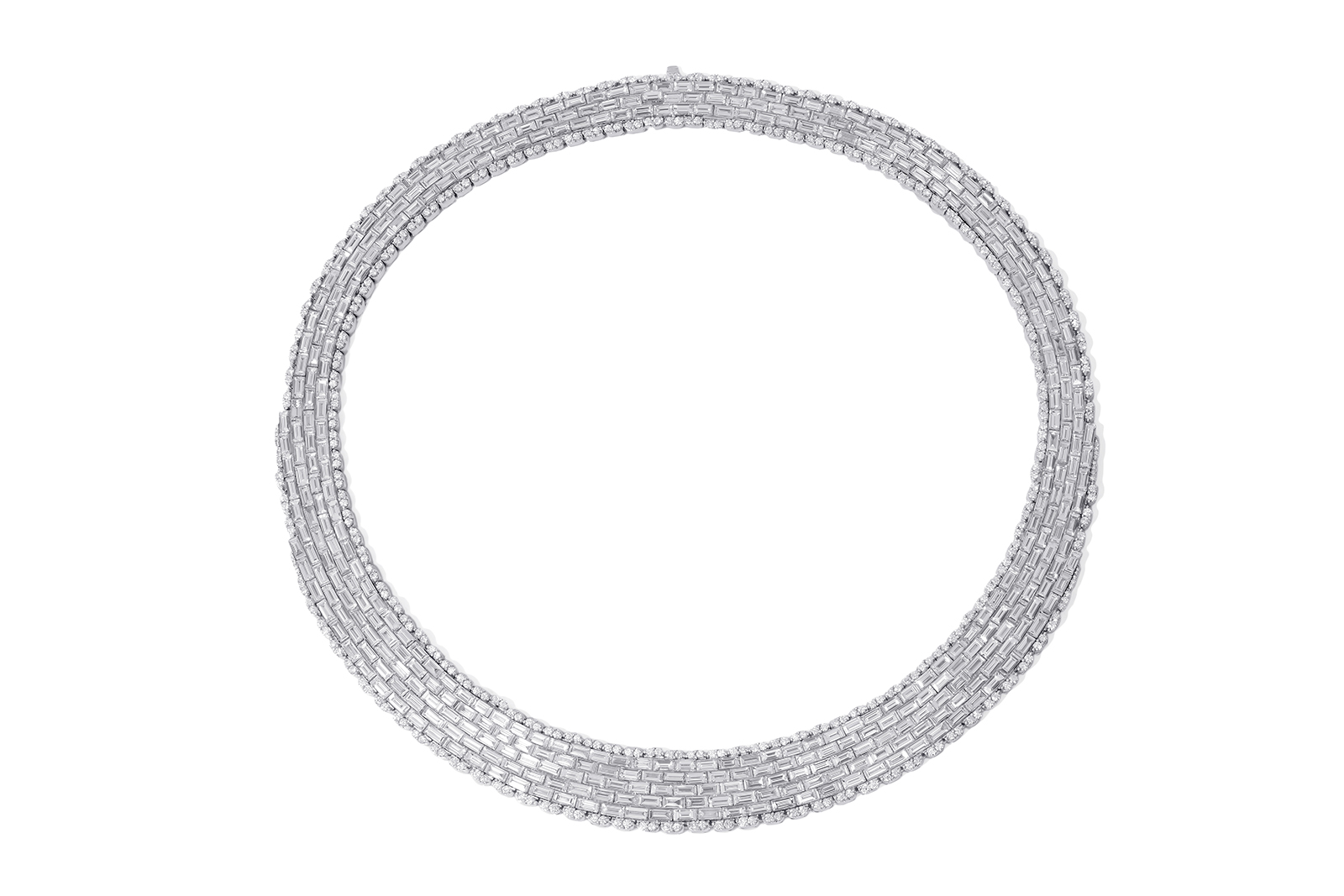
Antartide diamond necklace from Iced Zeit collection by Stenzhorn
For the creation of this jewel we implemented the same concept as we did for last year’s Ovidio necklace, however we used baguette-cut diamonds instead of carré. The assembling of the Antartide necklace is done in a few stages. First you create the bezels in gold, then you re-cut the baguettes to fit the design giving them the right shape and dimension, then you cut the grooves on the side of each stone and assemble baguette after baguette in the gold bezels. Only after we place all of the elements in, do we fix them permanently. – Anna Strarosti
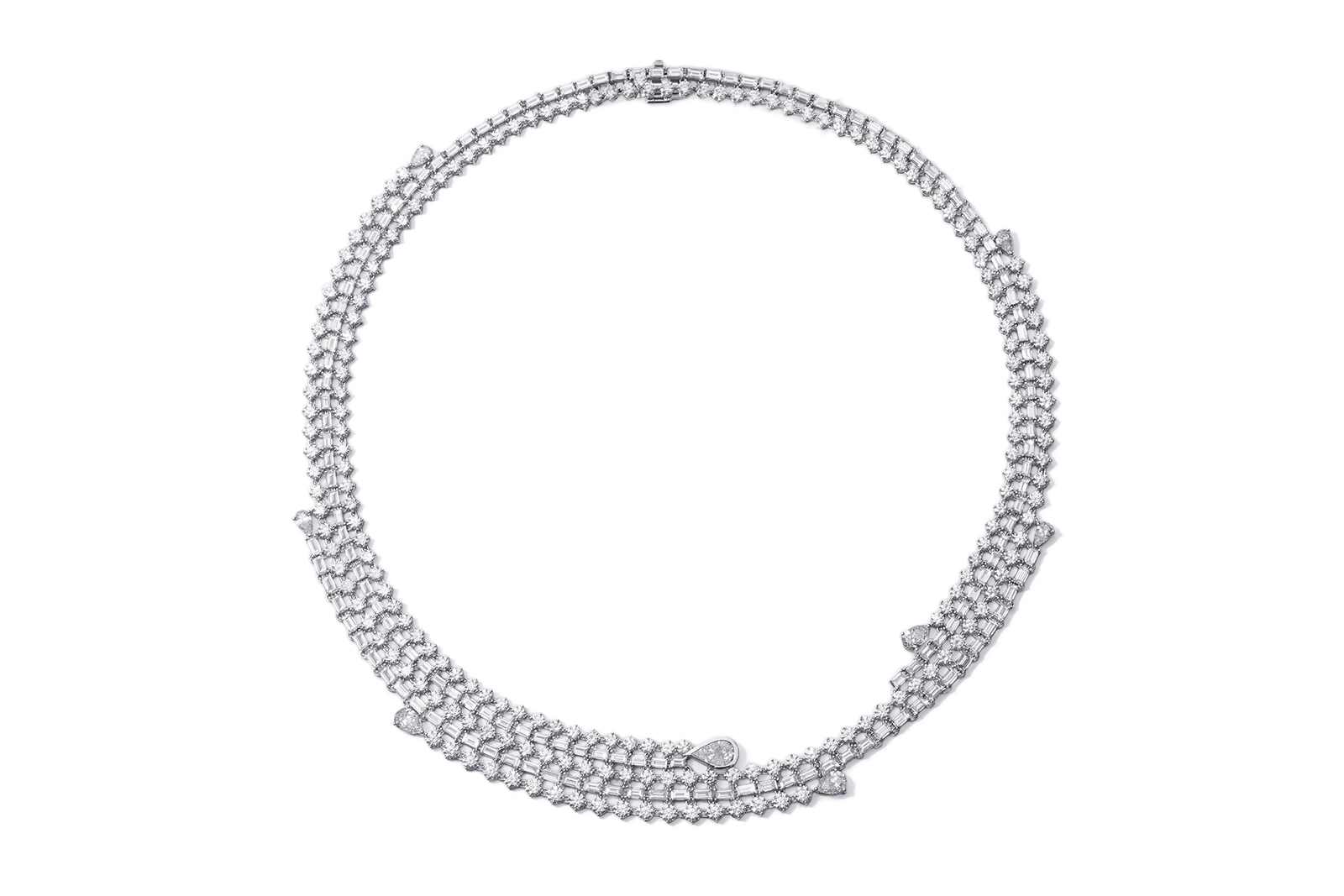
Storm diamond necklace from Iced Zeit collection by Stenzhorn
As you can see, in the Antartide necklace, it’s not only the design that is unique, but also the technical performance. When I tried the jewel on, the first thing I noticed was how perfectly it embraces the neck and yet maintains a smooth surface, as with each diamond having a rectangular shape, it should in theory protrude slightly in the shoulder area. To achieve this effect, one person and one person alone assembled this necklace over the course of four months, working in concentration as if on a Rubik’s cube. The only difference is that the person setting the diamonds acted strictly in line with the mapped design, on which each stone had its own number just like coordinates, and so one by one he put each stone into place.
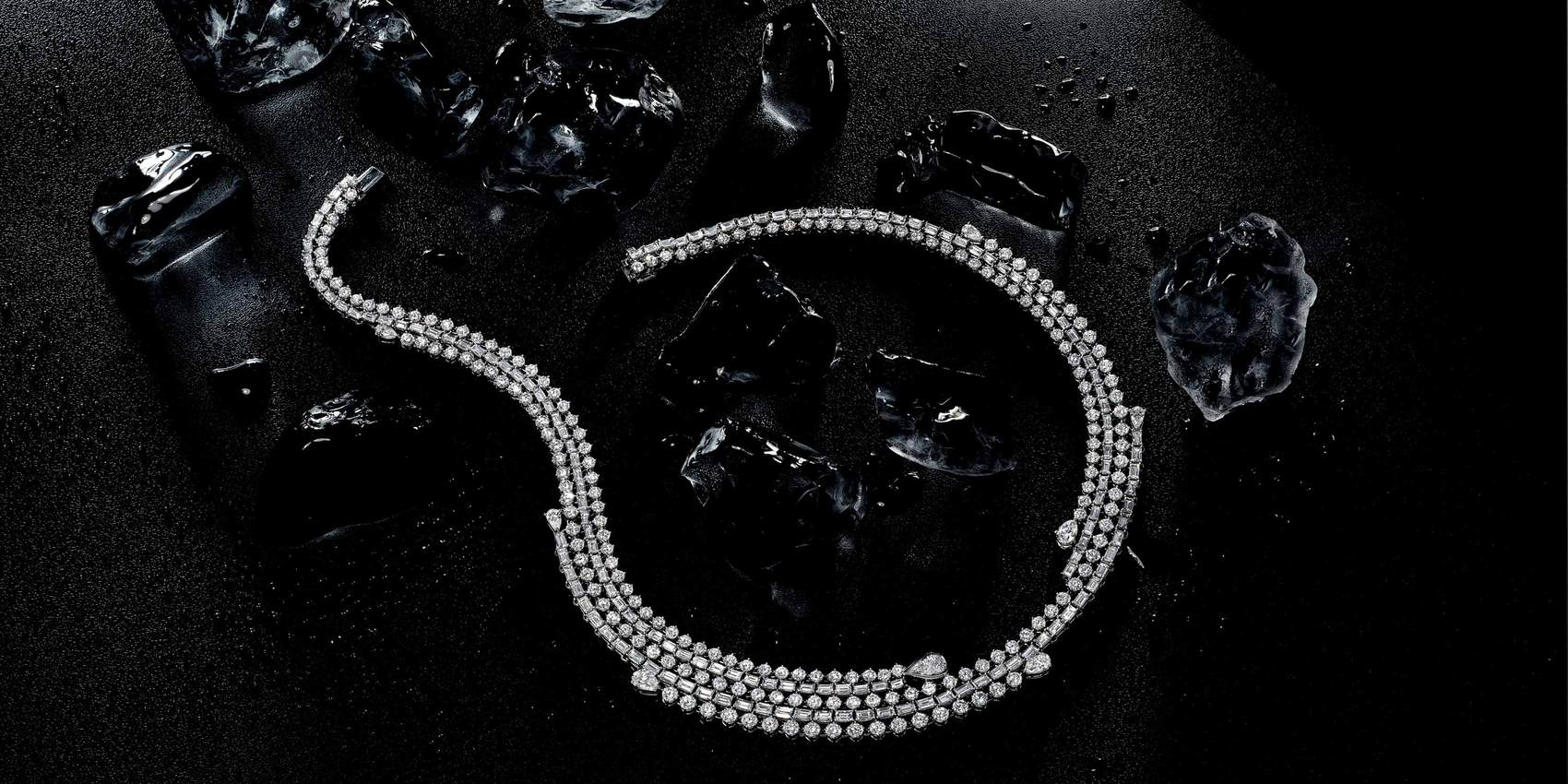
Storm diamond necklace from Iced Zeit collection by Stenzhorn
When getting to know the Iced Zeit collection, the striking asymmetric “Storm” necklace made an equally strong impression on me. It is made entirely of diamonds and is reminiscent of a snow storm: the vortex of “baguette” and “round brilliant” cut diamonds encircle the neck in three parallel lines, thanks to the “second skin” technique, so it cascades down the neck, echoing every bend of the collar bone. As you can probably tell, Klaus Stenzhorn dedicated this collection to diamonds pure and simple, because unlike any other stones, diamonds are easily associated with ice crystals.
Incidentally, alongside the unique pieces described above, the collection also includes everyday jewels: more concise necklaces, pendants, drop earrings, hoops, studs, bracelets and rings, in pink and white gold. The central element is the Muse diamond, which brings together smaller stones into one large central diamond.
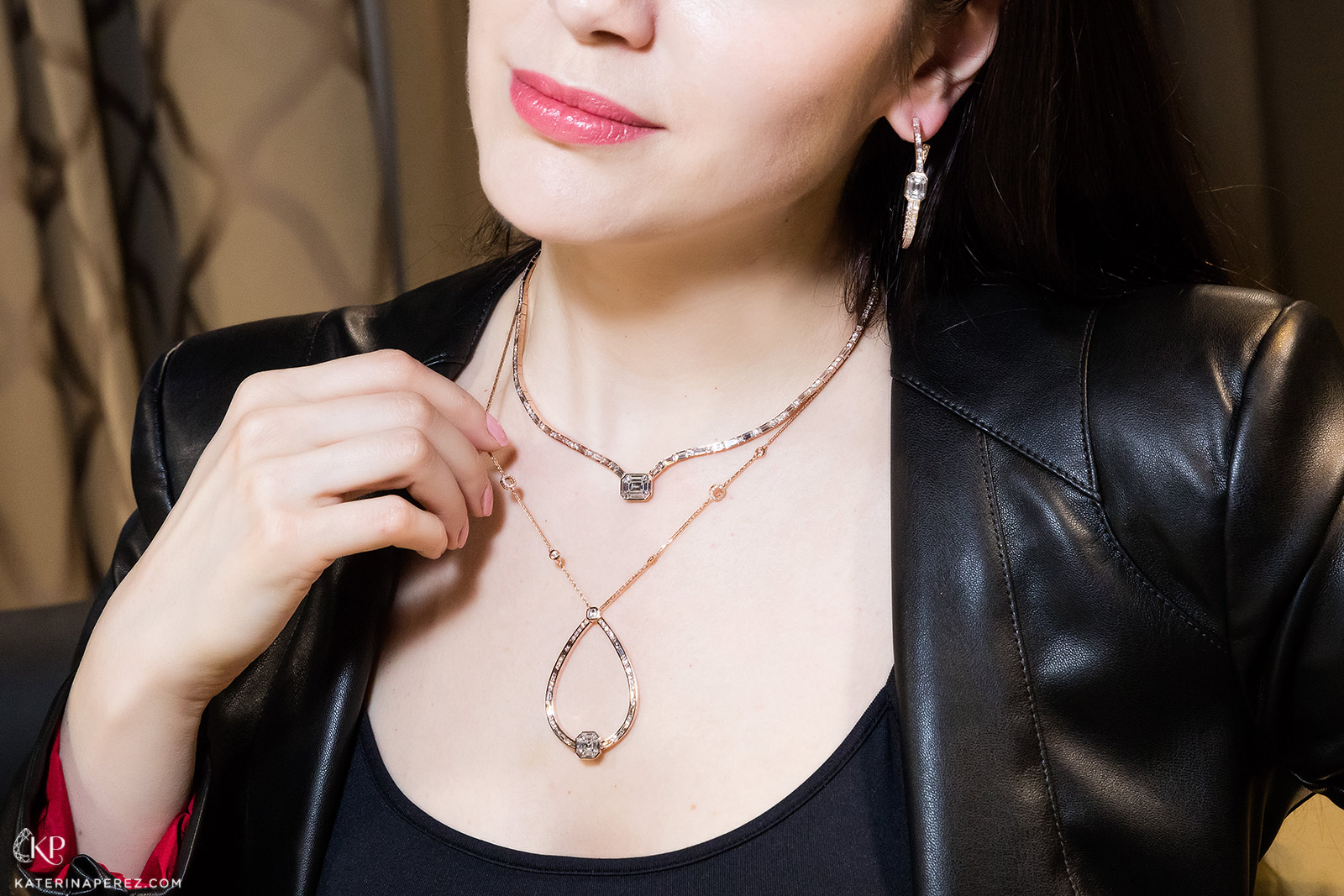
Iced Zeit necklaces with diamonds from Stenzhorn
One might say that in the Iced Zeit collection, Klaus Stenzhorn has surpassed himself – again. Want to see it for yourself? You can do so at the Hong Kong Gems and Jewellery Fair from 14 to 18 September at the Hong Kong Convention and Exhibition Centre.

WORDS
Katerina Perez is a jewellery insider, journalist and brand consultant with more than 15 years’ experience in the jewellery sector. Paris-based, Katerina has worked as a freelance journalist and content editor since 2011, writing articles for international publications. To share her jewellery knowledge and expertise, Katerina founded this website and launched her @katerina_perez Instagram in 2013.
